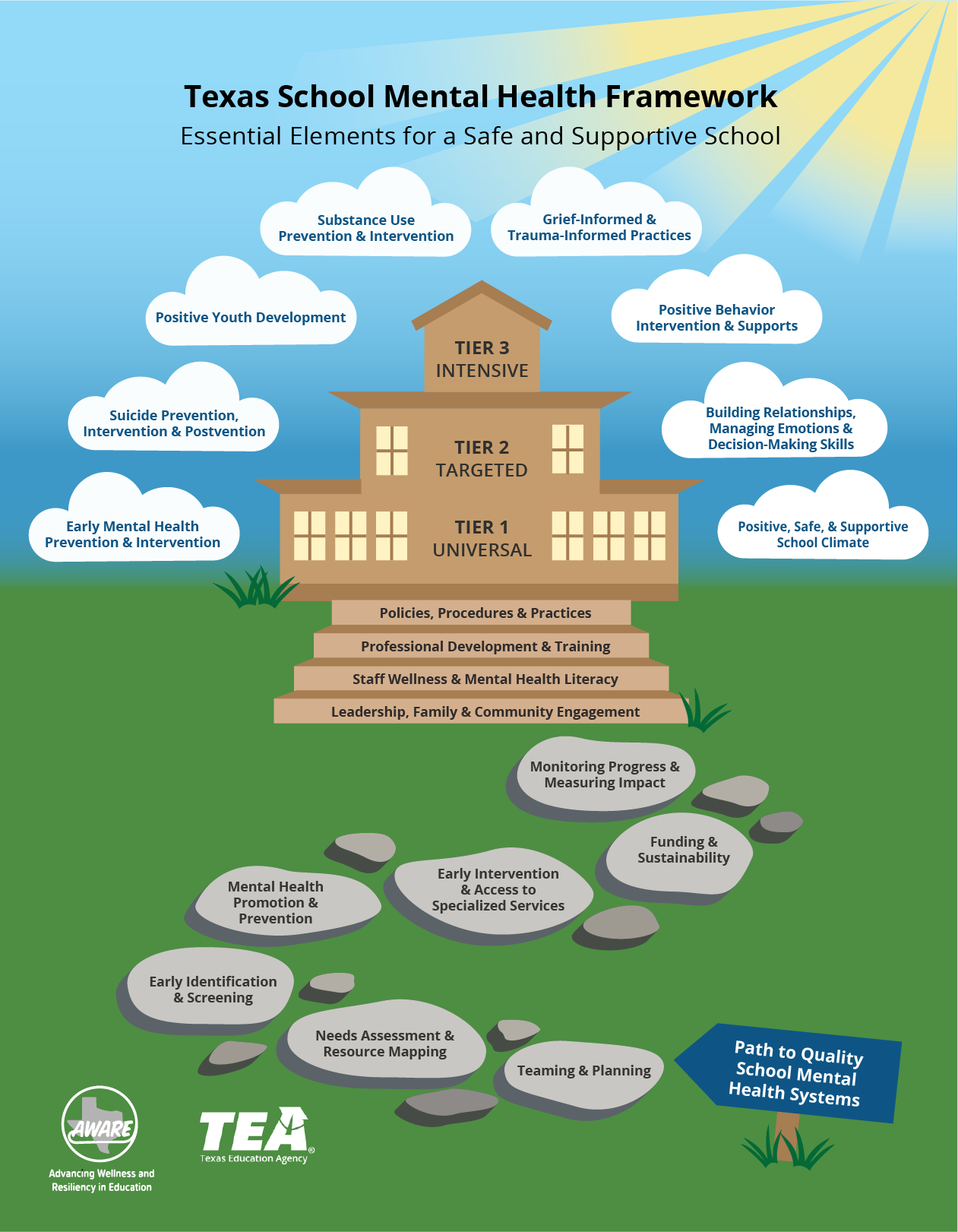Definition of Comprehensive School Mental Health
Comprehensive school mental health systems provide a continuum of services and supports intended to:
- Promote a positive school climate
- Teach and support skills for social, emotional, and behavioral health
- Prevent mental health and substance use problems
- Intervene early to reduce the severity of mental health concerns; and
- Provide access to school-based and community-based interventions and supports to students and families.
Comprehensive school mental health systems support the safety, academic success, and well-being of students. The comprehensive school mental health system is built on a strong foundation that brings together a diverse group of stakeholders to plan, implement, and improve the system; conducts regular needs assessments to understand the strengths, gaps, and needs within the local context; selects and implements responsive services and supports that are backed by evidence of their effectiveness, and engages in on-going performance monitoring and quality improvement.
The Texas School Mental Health Framework
The Texas School Mental Health Framework provides a graphic look at the essential components of a comprehensive school mental health system. Let’s examine the different parts of the framework.
The Schoolhouse
The schoolhouse in the center of the picture represents the multi-tiered system of support (MTSS) that outlines the structure of the school mental health system. Drawing from a public health approach, the MTSS identifies that our services and supports are planned for three tiers: one tier to provide universal supports to all students (Tier 1), one tier to intervene early and address emerging mental health concerns (Tier 2), and one tier to provide intensive or specialized services to support students with a mental health disorder (Tier 3). The MTSS is strengthened by the factors represented on the steps to the school.
The Pathway
On the stone pathway, we find the domains of quality for our school mental health system. Within each domain, districts and schools can explore best practices for effective school mental health systems, benchmark their local practices to national quality standards, and plan for and prioritize improvements.
The Clouds
The components of a comprehensive school mental health system are presented in the clouds above the schoolhouse. The components, identified in TEC §38.351, represent the areas in which Local Education Agencies must develop practices, procedures, and/or professional development opportunities. Specific requirements are outlined in the School Mental Health Toolkit. Resources, best practices, and training for these components are available on the TEA Best Practice List.

